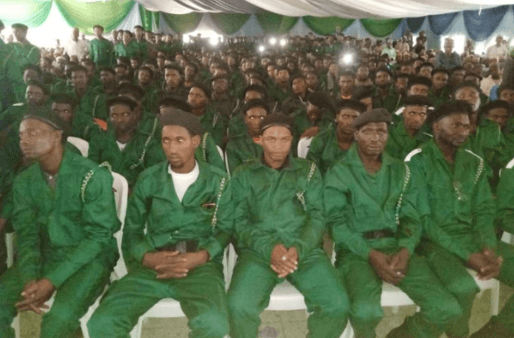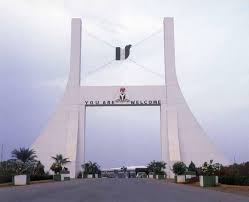4,000-year-old defensive wall found at site of Prophet Mohammed battlefield

By Daniel Bardsley
An extraordinary Bronze Age structure, stretching for 14.5km around an oasis in north-eastern Saudi Arabia, has been revealed in a new study.
The 4,000-year-old wall around the Khaybar Oasis is thought to date from between 2250 and 1950 BCE, and is likely to have been built both for protection and to display strength.
The area it enclosed contained at least one settlement and was likely used as agricultural land. Much later, in 628 CE, the Khaybar Oasis was the site of an important military victory for the Prophet Mohammed, making it a key location in Islamic history.
This is a very important historical area. It means a lot to many people, in particular to Muslim people
Dr Guillaume Charloux, of the French National Centre for Scientific Research
Until recently, the wall remained undetected, as the oasis had not been surveyed in detail. But now, experts believe the land was surrounded by the structure, with walls ranging in thickness from 1.7 to 2.4 metres.
It is believed that the oasis was a complex of “many places that were fortified with monumental architecture”, a new study published in the February edition of the Journal of Archaeological Science: Reports reveals.
“We can really show that there was a kind of walled oasis complex in north-west Arabia during the Bronze Age. This makes the thing very exciting,” said one of the authors of the study, Dr Guillaume Charloux of the French National Centre for Scientific Research.
As recently as two decades ago, the existence of settlements in this area was unknown, before work by Saudi Arabian and German archaeologists showed that such sedentary communities did exist. More than half a dozen walled oases have since been identified.
“Thanks to this discovery of Khaybar, we are now able to say it’s not one place, it’s many places that were fortified with monumental architecture. It makes the thing absolutely exciting and very different to our initial belief,” Dr Charloux said.
Why was the wall built?
Over the past three years, archaeologists, anthropologists and other specialists have made several trips, ranging from one to three months, to survey and excavate the site.
Every remaining segment of the wall had a number of bastions or projections, demonstrating that it had a defensive function and that the sections all belonged to the same structure.
“We can say that the main goal, the main purpose, was ostentation,” Dr Charloux said. “It means that people really wanted to show their power and to demarcate their own territory and demarcate what is inside and what is outside, which is the desert and the plateau and the very arid area.”
Another key role was protection, although Dr Charloux said it should not be thought of in the same way as a fortified Mediaeval wall.
“Of course it’s protective, but it’s not … active defence with archery or military units. It’s probably passive defence. People can enter only if they’re authorised to enter,” he said.
The structure will have also offered protection against adverse weather, such as wadi floods and sandstorms.
It is uncertain how many people lived within the oasis, but a rough estimate suggests the population may have numbered between 1,000 and 1,500, while seeds found in the area suggest cereals were cultivated for food.
Dr Charloux has also calculated that the structure would have taken a group of 250 workers about four years to build.
What next?
The Royal Commission For AlUla (RCU), which is responsible for the north-western Saudi Arabian region, has asked researchers from the French National Centre for Scientific Research to carry out work at the site. The RCU’s own experts also took part, alongside an independent researcher.
The study is published in the February edition of the Journal of Archaeological Science: Reports under the title “The ramparts of Khaybar. Multiproxy investigation for reconstructing a Bronze Age walled oasis in Northwest Arabia”.
It is the first of what is set to be a string of publications from the fieldwork, with future papers likely to cover other aspects of Bronze Age life, including the oasis’s population, other archaeological periods, and the fauna and flora.
“We work on all periods. We work on the prehistoric period, on the Bronze Age, on the pre-Islamic period, on the Islamic period, on all aspects of climate and all the specific studies like ancient fauna and paleobotany,” Dr Charloux said.
Archaeologists in Gaza unearth large cemetery containing rare lead sarcophagi
“We try to have a global understanding of the Khaybar Oasis through time. This is the objective of our work.”
The site, which is unusually well preserved for an oasis in the area, is already open to visitors, but numbers are expected to increase as Saudi Arabia works to develop its tourism industry.
Madinah is about two hours to the south, while the city of AlUla is about two-and-a-half hours to the north.
“I’m sure there will be a lot of visitors in the future. This is a very important historical area. It means a lot to many people, in particular to Muslim people,” Dr Charloux said.
Source Nationalnews


